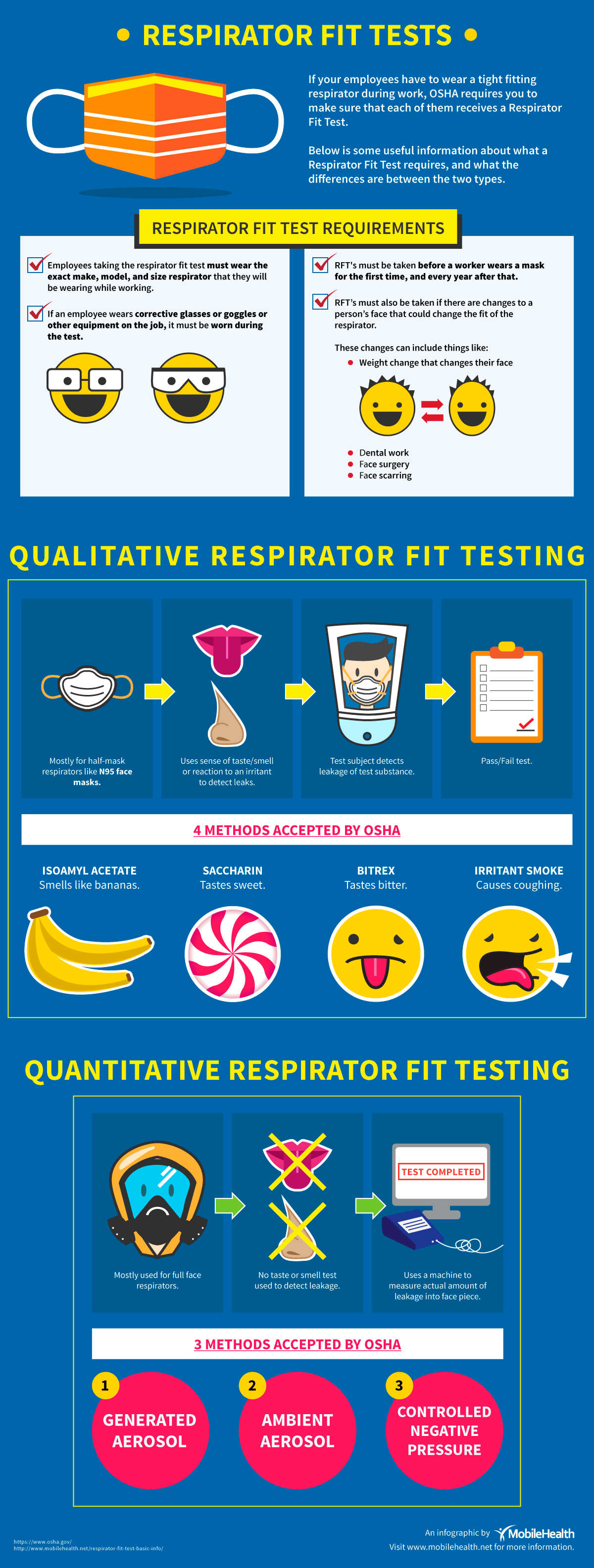
Mobile Health has dozens of occupational health locations nationwide through our network of clinics where you can get a respirator fit test done. We can even do on-site respirator fit tests in certain situations. If you need a respirator fit test (RFT) done for your employees, feel free to click below to request a free quote.
While we’ve written before about the different types of respirator fit tests, here’s a new infographic that shows the differences between a qualitative respirator fit test and a quantitative respirator fit test.
Why a Respirator Fit Test (RFT)?
Most respirators can be separated into two categories: loose-fitting and tight-fitting. because loose-fitting respirators don’t rely on a tight seal to work, they don’t need to be fit tested. Tight-fitting respirators, on the other hand, must be fit tested to make sure they can do the job right. It’s important that employees stay safe. RFT’s will help to make sure employees aren’t breathing in anything they shouldn’t. It’s that simple.
But safety isn’t the only reason for an RFT. Employers should also know that the Occupational Safety and Health Administration (OSHA) mandates that businesses that require their employees to wear a respirator give each one a fit test.
But how do you know which RFT you need? How can you be sure that your employees are protected on the job? The following is an infographic that graphically represents the different types of respirator fit tests, what happens during them, and which you’ll probably need.
Which Employees Need a Respirator Fit Test?
If your workers are going to be in places with certain atmospheric dangers, you are probably obligated by OSHA to make your workers wear a respirator during work.
There are many types of respirators, but generally, respirators are either loose-fitting or tight-fitting. Because tight-fitting respirators can’t protect you unless they fit, they’re held to tougher standards.
If your workers need to wear a tight-fitting respirator while they work, OSHA rules require that the exact make, model, style, and size respirator be fit tested before they wear a respirator and at least every year after that.

Share this infographic:
Tags: infographic, Occupational Health, Respirator Fit Test
